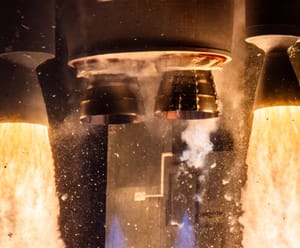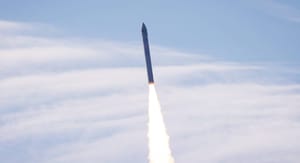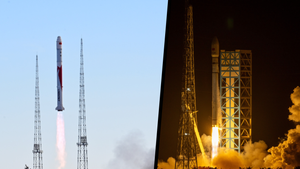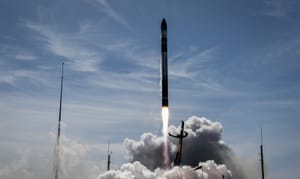
Oct 5, 2024
The BE-4: Blue Origin's Beast
Blue Origin's BE-4 recently demonstrated a great feat of resilience by compensating for a solid rocket booster anomaly on United Launch Alliance's second Vulcan certification flight, allowing the mission to successfully reach its targeted orbit. In this article I will go over the past, present, and future of this incredible rocket engine.

Blue Origin's mission is to preserve our planet for future generations by outsourcing our heavy industries, including mining and manufacturing, offworld. With millions of people living and working in space for the benefit of Earth. The physics of spaceflight has already been worked out, it's a solved problem. The problem Blue Origin hopes to solve is the overwhelming cost of spaceflight, which starts with reusable rockets. And if you're gonna build a reusable rocket, you're gonna need a reusable engine for it, that's BE-4.

With 340 seconds of ISP, Blue Engine 4, or BE-4 runs on Liquified Natural Gas (LNG) and Liquid Oxygen (LOX) in an oxygen-rich staged combustion cycle, in which the Liquid Oxygen is partially combusted with a small amount of LNG in a pre-burner. The hot gas from this partial combustion is used to drive both of BE-4’s turbopumps using a single turbine, the hot oxygen-rich gas then meets the rest of the LNG in the main combustion chamber where it combusts fully to produce the engine’s 550,000 lbs of thrust, making it the most powerful LNG-fueled rocket engine. It also has the capability to throttle to as low as 40% power, or 220,000 lbs of thrust. To allow for reusability and a longer lifespan of the engine, hydrostatic bearings are used in the turbopumps, which are basically a thin very thin layer of high pressure fluid moving in betweenthe surfaves of the bearings, this allows the bearings to have very little if any friction or wear, which drastically increases the lifespan and reusability of engine components.

BE-4 was originally planned to have an upper stage varient used on New Glenn called BE-4U, but this was canceled and replaced with BE-3U.

BE-4 began development in 2011, but wasn't announced until 2014. In 2018 United Launch Alliance announced it had selected BE-4 to power the first stage of its Vulcan Centaur rocket, Which it did on January 8th, 2024 for the Vulcan Cert-1 launch carrying Astrobotic's Peregrine lunar lander, and on Cert-2 yesterday carrying an inert payload and some experiments.

The BE-4 had previously been considered for the XS-1 space plane, but was not selected. The XS-1 program was canceled in 2020.

In 2017 Blue Origin selected Huntsville, Alabama, colloquially known as Rocket City, as the location to build a manufacturing plant for BE-4, opening it for production in 2020.

But Vulcan and XS-1 are not why Blue Origin developed the BE-4, the reusable engine was developed primarily for Blue Origin's orbital New Glenn rocket, which will be powered by 7 BE-4s on the first stage.

New Glenn, named after Mercury 7 astronaut John Glenn, is about the same height as NASA’s Space Launch System rocket, and according to Blue Origin it will be the smallest of their orbital class rockets. It is capable of sending 45 metric tons to LEO and 13 metric tons to GTO. It's inaugural launch is planned for November, and will be launching "Blue Ring technology" as a tech demonstration for Blue Ring, a powerful satellite platform capable of delivering multiple payloads to multiple orbits. Other notable payloads for New Glenn will include NASA's ESCAPADE mission to study the interaction between Mars' magnetosphere and solar wind, Blue Moon Mk1 which will be able to land up to 3 tons of cargo on the lunar surface, Blue Moon Mk2 which will land humans on the moon for NASA's Artemis program starting with Artemis V, elements of Lockheed Martin's Cislunar Transporter which will transport Blue Moon Mk 2 to lunar orbit, modules for Blue Origin and Sierra Space’s joint Orbital Reef commercial space station, and eventually a Blue Origin crew capsule.

With two successful flights of Vulcan complete and the upcoming first flight of New Glenn next month, the future of BE-4 could not be more exciting!




